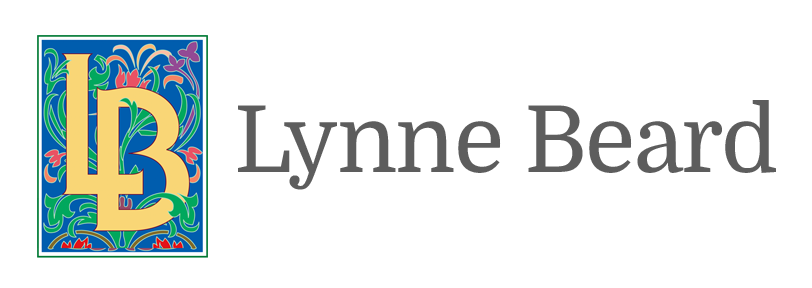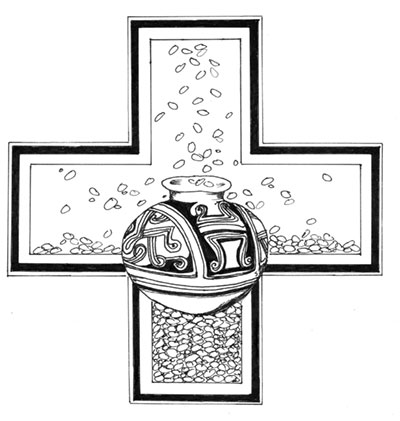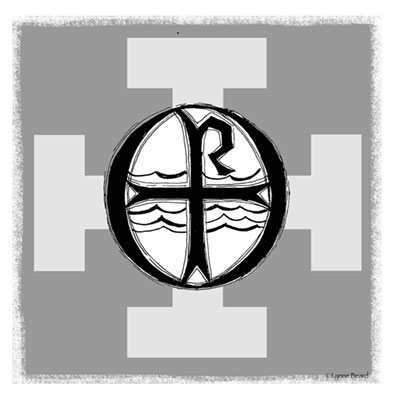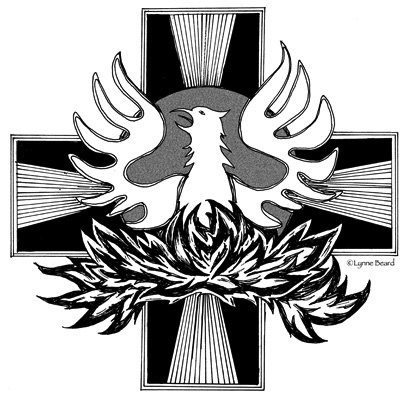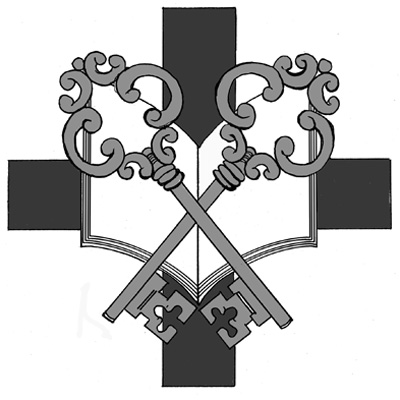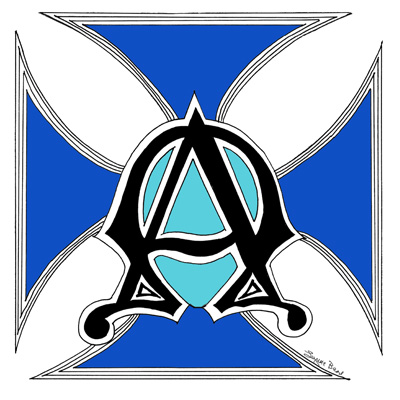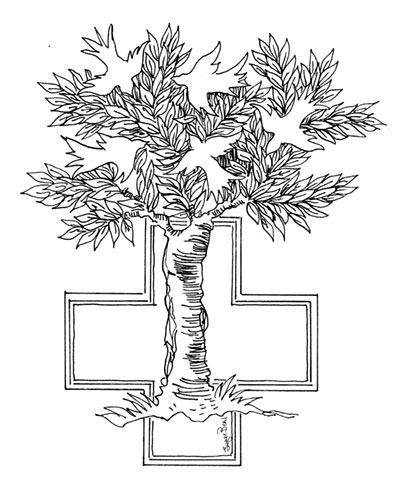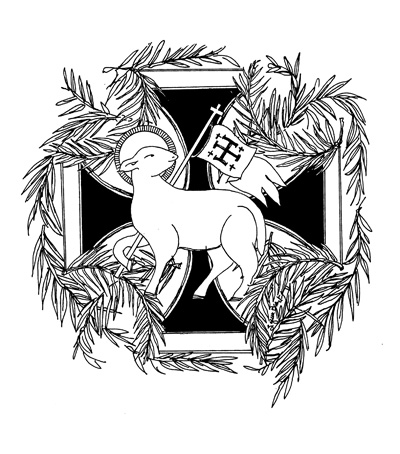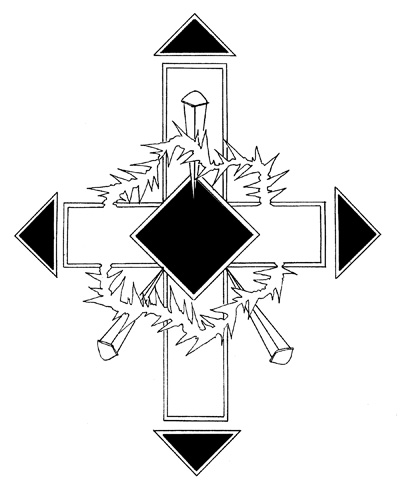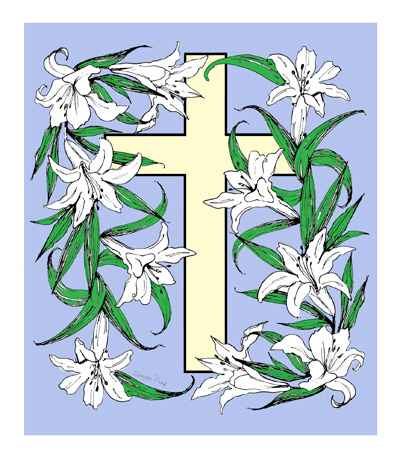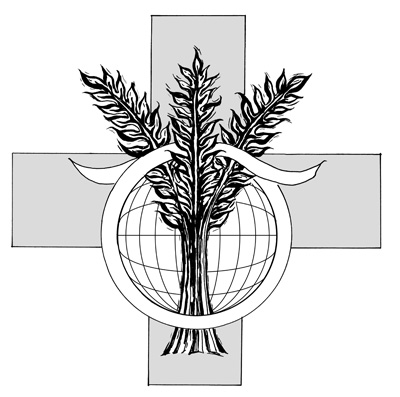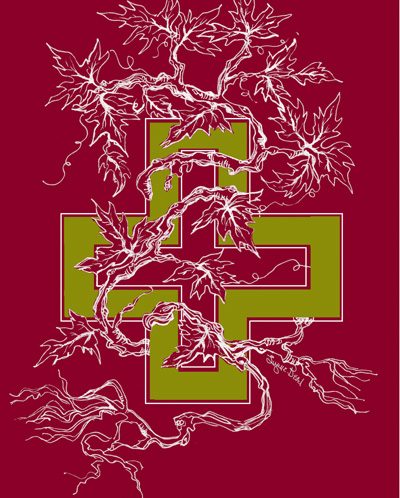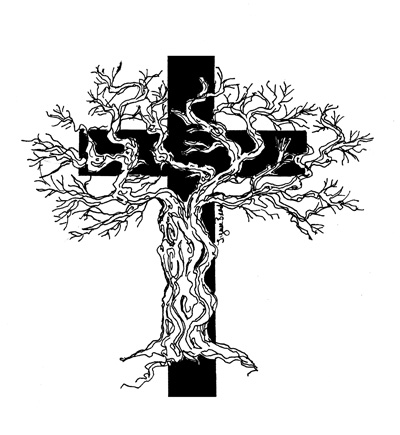July 2, 2012
Manna – This design reflects the Old Testament reading which tells of the miraculous falling of manna from heaven which was sent by God to feed the Israelites during their stay in the wilderness. Manna was a mysterious substance and the name is derived from the ancient Hebrew word manhu which means “what is it”. It is described in the Bible as white, seed-like oval flakes which fell during the night covering the ground like frost, and had to be collected by sunrise before it melted in the sun. Manna resembled coriander seeds and was the color of bdellium, a
July 2, 2012
Healing Cross –The Cross Potent is based on four Tau Crosses whose lower ends meet. It is called the Cross Potent because of its resemblance to an ancient crutch. This cross is a symbol of Our Lord’s power to heal the afflictions of the bodies and souls of all mankind. The design also incorporates the Chi- Rho, a monogram of Christ, with the renewing water of baptism.
July 2, 2012
Phoenix – A widely used symbol of Our Lord’s Resurrection is the phoenix. According to one legend of this fabled bird, which somewhat resembles an eagle, it lives to an age of four or five hundred years. It is set on fire by the heat of the sun by the fanning of its wings and is consumed in the fire. The bird then rises out of the ashes, recreated and young, and is destined to live another four or five hundred years. The phoenix appears on early coins of emperors, such as Constantine, and is also a common symbol on
July 2, 2012
Peter and Paul – Peter and Paul represent the spread of the gospel and, according to tradition, were martyred on the same date. The two keys symbolize the giving of the keys to the kingdom to Peter by Jesus and is known as the donatio or traditio clavicum. Paul received the gift of the law, that is doctrine, which is represented by the open book. This is known as traditio legis. Christian tradition, and therefore the iconography too, often thinks of these two apostles together as pillars supporting the church, Paul by his teaching and Peter by his assigned task
July 2, 2012
Alpha-Omega–The Alpha-Omega emblem expresses God’s eternity by means of the first and last letters of the Greek alphabet. The first letter, Alpha, denotes that God is the first of all things- there was no one before Him from whom He could have received the fullness of truth. The last letter, Omega, signifies that God is the last of all things- there will be no one after Him to whom He could bequeath this perfect truth. This symbolism has its origins from the Jewish word Emeth, or truth, the first and last letters of which are also the first and last
July 2, 2012
All Saints – The design for All Saints is centered around the tree which is a symbol of life in all stages. The tree, as it sheds its leaves in the fall and then comes into leaf once again in spring, symbolizes our lives in this world and in heaven. Birds represent the soul and in early Christian art were symbols of the spiritual life and of new souls and souls saved through baptism. The cross is a reminder that eternal life is made possible by Christ’s sacrifice.
July 2, 2012
Agnus Dei – The symbol of the Lamb of God or The Agnus Dei is of most ancient origin and is based on Scripture verses found in Isaiah, John and Revelation. It is often depicted carrying the banner of victory and crowned with the nimbus representing divinity. Combined with the branches of the Palm tree, it represents Christ’s triumphant entry into Jerusalem. The qualities of gentleness and innocence associated with lambs reflect the concept of the sacrifice of Christ offered as an expiation of the guilt of mankind. It is a symbol of the triumph of the Cross and also
July 2, 2012
Passion Cross – The Passion Cross, which is also called the Cross Aiguisee and the Cross Urdee, has its ends cut to points, which stand free of the cross. Because it represents the suffering of Our Lord, it is also known as the Cross of Suffering. In this design it is combined with the crown of thorns, which was a parody upon the Roman Emperor’s crown of roses. Three nails and the monogram of Christ are included and all of these are symbols of the Passion.
July 1, 2012
Easter Cross – Because it blooms at Eastertide, the familiar Easter Lily is a common and extremely popular symbol of Our Lord’s Resurrection. It also represents purity, innocence, rebirth and hope- the spiritual essence of Easter. Tradition has it that lilies were seen growing in the Garden of Gethsemane after Christ’s agony. The lily has the shape of a trumpet and depicts the announcement of the birth (and hence the death and resurrection) of Jesus Christ. Because they are white, lilies signify the pure new life which is the promise of the Resurrection. The cross combined with lilies is known
July 1, 2012
World Communion Sunday – Wheat is an ancient symbol that is used to represent Holy Communion and it is combined with the never-ending circle of unity and the globe of the earth. These are depicted with the cross to remind us that on World Communion Sunday, Christians around the world are gathered together to receive the Eucharist as one united body in Christ.
July 1, 2012
Vine And Branches – The vine and vine leaves are ancient symbols of peace and plenty widely used in both the Old and New Testaments to denote the relationship between God and His people. The vineyard was the sheltered site where the Keeper of the Vineyard (God) tended His vines (the children of God) (Is 5:7). As an emblem of Christ, it is the “true vine” (Jn 15:1, 5, 8). Vine and vine leaves referred to the Christian church and God as the Keeper of the Vineyard and are also symbols of the Eucharist. This reminds us that all are
July 1, 2012
Gnarled Olive Tree – This design reminds us that Jesus joins the church in the wilderness for forty days as we begin our Lenten journey. The tree interwoven into the cross also represents the wood of the tree which becomes the cross of Christ. The symbolism is poignantly expressed in the words of this poem: Three crosses now on death’s hill stood, Three trees killed for a killing’s sake, To kill a woodworker with his wood, Stained now with a carpenter’s blood.
Loading new posts...
No more posts
